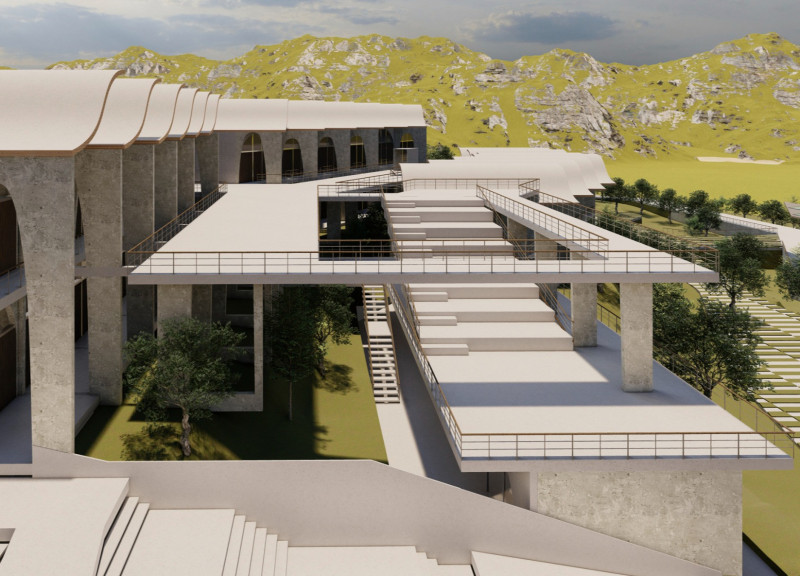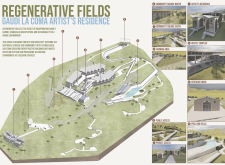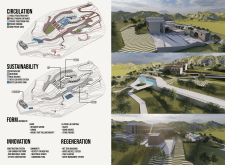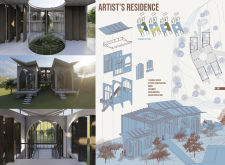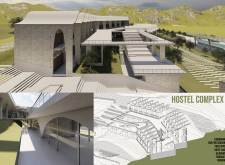5 key facts about this project
The Gaudi La Coma Artist's Residence is located within the Regenerative Fields initiative. It combines the historic architectural style of Antoni Gaudí with contemporary standards of sustainability. The residence functions as a creative space for artists, promoting collaboration and community interaction. The design emphasizes a close relationship between the built environment and the surrounding nature.
Architectural Concept
The design focuses on creating spaces that encourage social engagement among residents and visitors. Features include two community squares, an artist's residence, a hostel, farming areas, and a heritage house. Each component is carefully arranged, allowing for public access and pathways that facilitate movement while maintaining privacy for those living in the residence.
Sustainability Initiatives
Sustainability is integrated throughout the project, aiming to achieve an energy-positive outcome. Photovoltaic systems and geothermal energy sources are used to reduce reliance on external power. The project includes heat recovery systems to improve energy efficiency, and a water recycling system that helps support irrigation for the surrounding landscapes.
Material Use
The primary construction material for the project is wood. This choice supports the commitment to reducing the carbon footprint while providing aesthetic and functional benefits. Using wood contributes to the overall organic feel of the residence and aligns with the design's emphasis on sustainability.
Architectural Influences
Local architectural traditions are recognized through design elements that reference La Puebla de Fantova. Features such as vaulted ceilings and round arches are integrated into the overall structure to honor the region’s cultural identity. This blend of old and new creates an environment that respects history while addressing present-day needs.
The artist's residence includes flexible spaces designed to accommodate various artistic practices. Large windows open up the interiors to views of the landscape and allow natural light to fill the rooms, providing an inspiring atmosphere for creativity.


